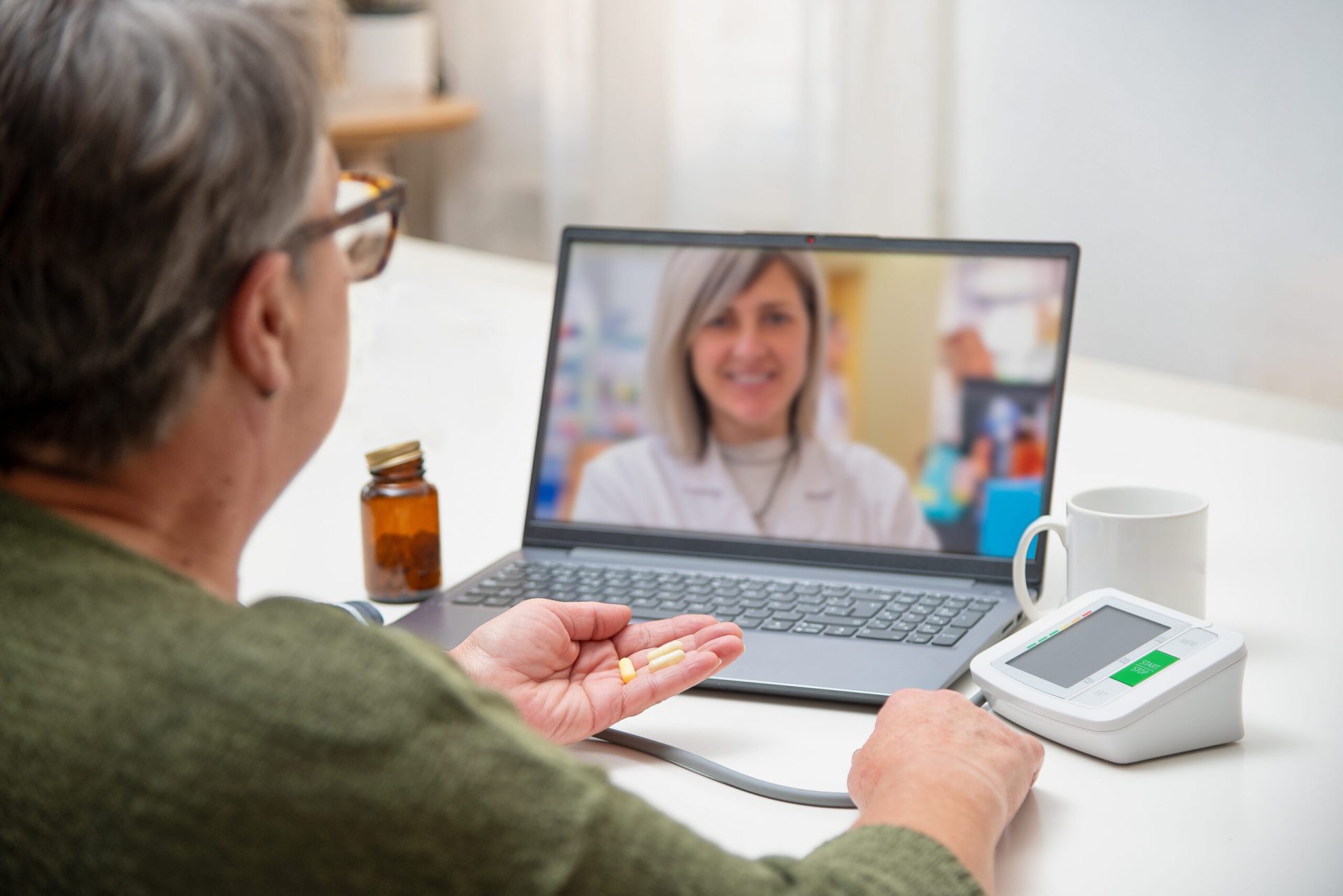Leveraging the One Big Beautiful Bill to Advance Telemedicine

- Jul 16, 2025
- 8 Min. Read
The passage of the One Big Beautiful Bill (OBBB) marks a pivotal moment in U.S. healthcare policy. With sweeping changes to government insurance coverage on the horizon, healthcare providers, policymakers, and innovators face a rare opportunity to reshape how care is delivered. Among the most promising frontiers is telemedicine—a sector that has rapidly expanded in recent years yet continues to face challenges in reimbursement, access, and infrastructure. As the provisions of OBBB begin to take effect, the healthcare community should take advantage of the opportunity to solidify telehealth as a permanent and powerful tool to ensure accessible, equitable, and efficient care.
Medicaid Cuts and the Risks to Rural Healthcare
Passed by the U.S. Senate on July 1, the House of Representatives on July 3, and signed into law by President Trump on July 4, OBBB is being celebrated by some as a major political and fiscal victory. However, the bill’s implications for Americans reliant on Medicare and Medicaid are significant. Nearly $1 trillion in Medicaid cuts are expected, potentially leaving 11–12 million people without health insurance. Stricter eligibility and verification requirements and new limitations on reimbursable services are central to these changes.
The ripple effects will be especially pronounced in rural and underserved communities. Experts anticipate a decrease in the number of providers and hospitals in these areas, driven by reduced reimbursement and increasing financial strain. Closures and relocations may widen the already troubling gap in care access, but within this challenge lies an opportunity to accelerate innovation in telemedicine and telehealth delivery and expand delivery for underserved populations.
A Brief History of Telemedicine
Telemedicine is not a new concept. In fact, the first documented instance appeared in The Lancet in 1879, where a physician assessed a child’s cough via telephone and ruled out croup—thus avoiding an unnecessary house call. From 1879 to 2000, telemedicine evolved slowly, first through basic phone consultations, then call centers, and eventually video conferencing. The rise of the internet, secure data transmission, and improved broadband speeds in the early 2000s laid the groundwork for more robust adoption.
COVID-19 as a Telehealth Catalyst
The COVID-19 pandemic proved a catalyst for that transformation. With in-person visits curtailed, both patients and providers turned to telemedicine—often for the first time. For example, I personally used a telehealth portal during the pandemic to address a rash. I uploaded a photo via MyChart, received a diagnosis of shingles, and was prescribed treatment without ever stepping into a clinic.
For those with access to technology and the digital literacy to use it, the benefits of telemedicine are clear. Patients can message their provider, upload photos or information, and receive timely diagnosis and care, thereby reducing wait times, avoiding unnecessary visits, and minimizing exposure to contagious illness. This modern approach echoes the 1879 telephone consultation, proving that care can be effectively delivered without a physical exam.
Barriers to Telehealth Access
However, significant barriers remain. Many Americans still lack the tools necessary to engage in telehealth: smartphones, tablets, or computers; reliable internet access; and basic digital or health literacy. A recent systematic review by Li et al. identified key models of telemedicine—televisits (real-time provider-patient communication), telemonitoring (remote health data tracking via wearables or devices), and tele-expertise (provider-to-provider consultation)—and four critical success factors for implementation:
- Development of a national health information and communications technology (ICT) index
- Investment in infrastructure for rural and remote areas
- Education and promotion of telemedicine for both patients and providers
- Sustainable innovation to support long-term program success
Infrastructure Gaps in the U.S.
While notably lagging behind other countries, such, as Finland, Singapore, and Qatar, in the ICT Development Index, the U.S. did reach the top 10 in 2024 with a score of 96.7, as reported by the World Population Review. Despite this, rural broadband remains a major challenge. In response, the Federal Communications Commission (FCC) launched the $20 billion Rural Digital Opportunity Fund (RDOG) in 2020. Unfortunately, progress has been stalled because many internet service providers have defaulted on their commitments. Similarly, the Broadband Equity, Access, and Deployment (BEAD) initiative aims to address internet inequity in both rural and urban underserved areas, yet the 2025 infrastructure report card from the American Society of Civil Engineers gave broadband a modest grade of C+.
Currently, approximately 90% of U.S. households subscribe to broadband services, and 94% have access to high-speed internet. But that still leaves around 24 million Americans—likely among the most vulnerable—without reliable connectivity. And even with universal access, barriers such as language, digital literacy, health literacy, and cultural preferences for in-person care could hinder adoption.
Federal Programs and Momentum for Innovation
Despite these challenges, there are strong indicators of commitment to telemedicine at the federal level. Numerous programs, including the USDA’s Distance Learning and Telemedicine grants, FCC’s RDOF and BEAD initiatives, and the Health Resources and Services Administration’s telehealth funding, reflect this investment. Bipartisan proposals are also under consideration to extend Medicare telehealth flexibilities beyond their current expiration. However, telehealth alone will not close the urban-rural health care gap. Additional action is urgently needed to deliver higher acuity care in rural settings.
With over 100 rural hospitals facing closures and experiencing increased mortality, the Advanced Research Projects Agency for Health (ARPA‑H) has unveiled a new program called PARADIGM (Platform Accelerating Rural Access to Distributed & Integrated Medical Care) that aims to deliver cutting-edge, hospital-equivalent services directly to rural populations using a rugged, electric vehicle platform. ARPA‑H is funding 12 interdisciplinary teams to develop mobile clinics equipped with everything from miniaturized CT scanners and IoT medical device integration to AI-guided task tools. Each team will tackle different technical challenges, like decentralized care, device interoperability, imaging, and clinician support. If successful, PARADIGM could revolutionize rural healthcare access by delivering complex diagnostics and treatments without the need for traditional hospital infrastructure.
A Call to Action: Seizing the Opportunity
To fully realize the promise of telemedicine under OBBB, we must act decisively. That means:
- Identifying communities most at risk of losing care access
- Expanding digital infrastructure, including stable broadband and technology access
- Addressing digital literacy gaps with community-led, culturally informed strategies
- Using telemedicine to close gaps in care and advance health equity for all Americans
- Developing novel approaches to delivering higher acuity care using miniaturized and highly portable healthcare technologies
The sweeping changes associated with the One Big Beautiful Bill will force changes in health care delivery that create challenges for our current delivery models but also open the door for innovation and positive change. By embracing innovation and investing in the future of virtual care, we can transform telehealth from a pandemic-era stopgap into a cornerstone of a more equitable, efficient, and resilient healthcare system.
What happens next will determine whether the One Big Beautiful Bill becomes a catalyst for progress or a cautionary tale of missed opportunity. Medicaid cuts may shrink brick-and-mortar options, but they also sharpen the imperative to deliver care unconstrained by geography. Telemedicine can meet that mandate—yet only if federal and state leaders pair fiscal reform with decisive investments in broadband, device access, and digital‐literacy programs. Providers must redesign workflows around virtual care. Payers must lock in fair, value-based reimbursement. Communities must advocate for inclusive, culturally competent technology. Done right, the legacy of OBBB will be measured by the millions of patients who gain timely, high-quality care without leaving their homes.
